So, I’m trying this new thing where I try to share with you some of the awesome, free-range conversations I have with my Darling Husband, a/k/a Cam Banks—Internet-famous author and game designer, family man, and Twitter’s Dad. Thanks to Eric Paquette for the series name: it makes us sound like an awesome spy duo or a delicious drink!
Today’s topic has been on rising boil for a while, but just blew the lid off last night with its latest flare-up. First, asking vociferous homophobe Orson Scott Card to write for Superman; then, this week, DC letting the Batwoman creative team quit rather than publish the same-sex marriage of BW and her partner, followed by last night’s kicker, the Harley Quinn “Break Into Comics!” contest art direction, which invites folks to draw HQ trying to commit suicide in a series of ways, including naked in the bathtub. People are so outraged that sources say individuals at DC are getting threats, in typical and totally unacceptable Internet fashion.
So my question to you, DH, is this: What in the pluperfect hell is going on at DC Comics right now?
 DH: This whole direction of being incapable of seeing what effect their portrayal of various characters is having isn’t new, obviously. You only have to look back to the past few years to see decisions like the really blatantly sexualized female characters in some of the New 52 titles. There’s a reason that one website has a “X Days Since the Last DC Comics Blunder” counter. [You can find a timeline of departures from DC since the New 52 reboot here.]
DH: This whole direction of being incapable of seeing what effect their portrayal of various characters is having isn’t new, obviously. You only have to look back to the past few years to see decisions like the really blatantly sexualized female characters in some of the New 52 titles. There’s a reason that one website has a “X Days Since the Last DC Comics Blunder” counter. [You can find a timeline of departures from DC since the New 52 reboot here.]
ProfBanks: Right. But all of these things have to make it past many sets of eyes before they finally go live. How do you think DC has become so divorced from their readership and core values?
DH: I think it’s more complicated than people think over at Warner [DC’s parent company]. Remember, this is a gigantic multinational entertainment company, and the turnover has been really crazy. Executives coming and going. People in charge of making decisions being fired or let go or moving on. Look at the fallout after Man of Steel, for instance. At DC Comics, I’m not sure some editorial staff know from one day to the next who their boss is. That doesn’t really explain why the folks who have their “boots on the ground” so to speak aren’t aware of the messages they’re sending out.
PB: What fallout after Man of Steel? I totally missed this.
DH: So, there’s been a lot of discussion of what would happen if they made a Justice League movie. Part of the deal with Christopher Nolan’s trilogy of Bat-flicks and Man of Steel was that they could somehow tie into one another and everything would naturally go Avengers-like. Unfortunately there was a dispute among the various executives in charge of movies and media, and Legendary Pictures walked away from Warner. Long story short, I don’t think the upcoming Batman/Superman movie was Plan A. Plus, a lot of people were seriously upset with Man of Steel anyway.
PB: I know I was really disappointed by how careless the destruction was in the movie during the fight between Supe and Zod. In the Superman II version, Zod and his team were able to break Supe’s focus by endangering people, whom he automatically went off to save. There was none of that care in Man of Steel, and pretty egregious destruction. I get the “But I just wanna stomp Metropolis!” urge for a filmmaker, but compared to The Avengers‘ battle in New York, the big Supe-Zod showdown just felt like a boss fight on a 2D video game backdrop where there are no consequences.
DH: Exactly. And this is a good example of missing the point. Now, I don’t think it’s an epidemic of thoughtlessness, it could just be another symptom of the push to get bigger, better SFX and visuals out there and skimp on story and plot. And we all know that no single screenplay in Hollywood ever gets to stay intact without being stripped apart and rebuilt hundreds of times by producers and studio executives. But even if this were shown to test audiences, I would have thought at some point somebody would have said “Hey, isn’t this kind of just disaster porn?”
PB: What I keep coming back to is the growing gap between the values DC has always espoused, especially through Superman but also underlying other core characters, the whole “truth, justice, and the American Way” thing. The “American Way” is changing as demographics change, and while the old mythology is powerful, aren’t they missing a huge opportunity to be more to today’s readers?
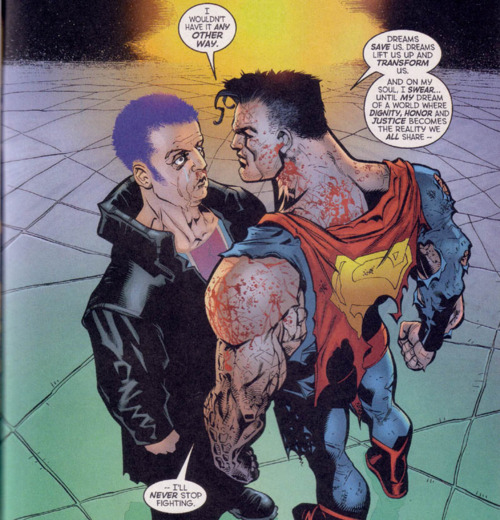
DH: They are. And in fact, there have been great strides made in terms of certain creators and writing and progressive characterizations. I don’t think you would have seen Batwoman—a really kick-ass lesbian hero character—headlining her own title a decade ago. Not the way folks like J.H. Williams III and W. Haden Blackman have been writing her, anyway. But somebody higher up the food chain didn’t read the memo. Or, in this case, tossed out their wedding invitation.

 PB: Whereas Marvel actually sent out wedding “invitations” before their same-sex marriage in Astonishing X-Men #51 last year, and it sold hugely for them. Do you think DC execs just don’t have a good idea of who their readers are?
PB: Whereas Marvel actually sent out wedding “invitations” before their same-sex marriage in Astonishing X-Men #51 last year, and it sold hugely for them. Do you think DC execs just don’t have a good idea of who their readers are?
DH: It’s possible. It’s also possible that we don’t know who their readers are, not completely, and that we’re sort of assuming that there’s a huge untapped audience of LGBT and multicultural readers who are being sidelined. That’s the problem with demographics. In some cases, an exec looks at two numbers on a sheet and says, “Well, we can afford to kick those people to the curb because this larger group won’t be interested and they give us more money anyway.” I have a feeling however that they’re on the wrong side of history here even if they believe they’re making good business sense.
PB: Compared with the success of Marvel across the board right now, I can’t understand how they think the move toward…I don’t even know WHAT they stand for anymore…is the right one. I mean, honestly, at this point, I have serious reservations about letting our boys consume DC material. What about you?
DH: I think you could take that stand, but on the other hand, so much of the tie-in stuff has nothing to do with this. Like, the Young Justice animated series that recently ended was amazing. I can only assume the new Batman cartoon will be a lot of fun, too.
But I think we’ve both come to the conclusion that certain properties like Injustice or Arkham City are too intense and don’t portray women or minorities in a way we want our kids to be exposed to. And hey, there really is no end of Marvel stuff out there.
Plus, having read Batwoman, it’s for mature audiences anyway. Not because of the character’s sexuality, but because a lot of the Bat-titles are written for mature audiences. (Don’t get me started on THAT mixed message, though.)
PB: Right?! Merchandising and marketing is aimed squarely, with the force of a firehose, at getting kids into Batman, but they’re not producing new content that’s age-appropriate except for the new show. And don’t get me started on Arkham Asylum and Arkham City—having that battle with the kid every other damn week is wearing me out. He thinks it’s okay that he understands that the way women and minorities are portrayed and treated is really messed up. He doesn’t believe me when I say that knowing it isn’t enough when his brain is absorbing these messages in formative years.
DH: Insert “I consumed media like that when I was a kid and I’m OK” comment here. At the very least, I’m conscious of how much we work to include diverse characters, stories, and other media into our kids’ lives so that, rather than necessarily getting rid of problematic stuff, we present more positive alternatives and make those more appealing. It would sure help if our major entertainment media companies would pitch in a little more in this regard.
PB: Yes, please. Let us leverage our vast combined influence on the entertainment media complex to make this happen.
DH: Great case study: Minecraft. But you watch. One day we’ll find out somebody who works on that game is a Nazi sympathizer or hunts big game in Africa.
PB: We’re not talking about Minecraft, dear. We’re talking about the screws loose in DC Executive Land.
DH: So my big take-away from this is that someone, somewhere, in DC Land needs to get a handle on the messages they’re sending out. They’re not in charge of that message right now. They might think they are, but I think the evidence (and the departures of writers and artists) is to the contrary.
Plus, for crying out loud, don’t use naked suicidal Harley Quinn as your art contest subject.
PB: Because that’s not triggery in any way.
DH: Nobody thinks this is a good idea.
How about—shocker!—a contest where you’re tasked to gender-flip a major DC character or present them as a non-white non-traditional character? That’d be a wonderful use of creativity.
PB: YES. MAKE IT SO.
DH: It’s already being done by every progressive artist on Tumblr or DeviantArt anyway. Maybe DC is just permanently late to the party. What do you do when your audience can find better uses for your IP than you do?

PB: Total regime change. The King is dead. Long live The King.
Thanks for the chat, honey.
DH: You’re welcome! We should do this more often.
PB: Yes, let’s.
 AV Club
AV Club  No Comments
No Comments 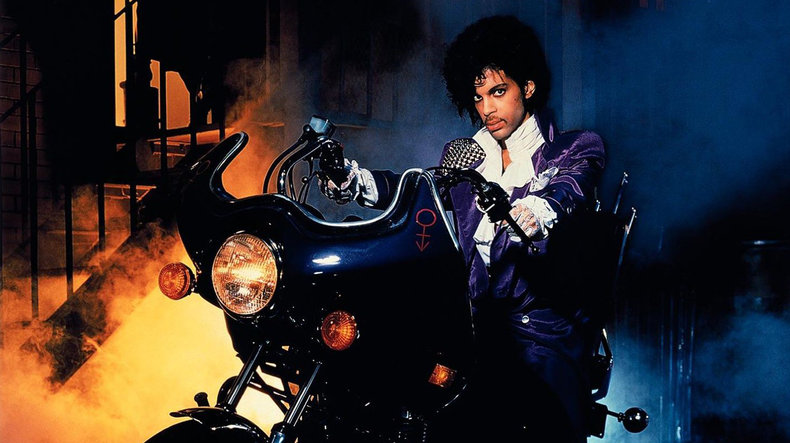

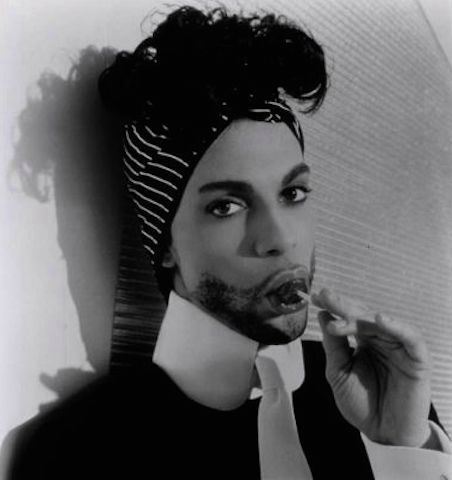 Prince was queer before I knew what it was. I sang along quite innocently as he breathed, “I’m not a woman, I’m not a man, I am something you can never understand.” And to be honest, I didn’t question it. His whole self was confirmation of that statement. My autistic perseveration as a child was history, and I especially enjoyed historical fashion. Prince was a museum of styles on parade. He had it all: Marie Antoinette’s beauty mark, Cleopatra’s kohl liner, Lord Byron’s carelessly tumbling curls, Cab Calloway’s finger waves, George III’s frothy lace jabot. Prince displayed a fearless feast of gendered signifiers, embracing and rejecting them all at the same time, sparing no one the intense focus of his seduction.
Prince was queer before I knew what it was. I sang along quite innocently as he breathed, “I’m not a woman, I’m not a man, I am something you can never understand.” And to be honest, I didn’t question it. His whole self was confirmation of that statement. My autistic perseveration as a child was history, and I especially enjoyed historical fashion. Prince was a museum of styles on parade. He had it all: Marie Antoinette’s beauty mark, Cleopatra’s kohl liner, Lord Byron’s carelessly tumbling curls, Cab Calloway’s finger waves, George III’s frothy lace jabot. Prince displayed a fearless feast of gendered signifiers, embracing and rejecting them all at the same time, sparing no one the intense focus of his seduction.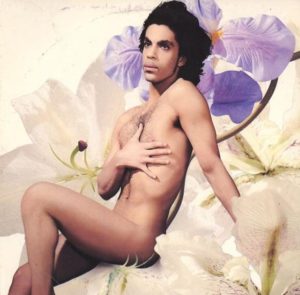
Now cracks a noble heart.—Good night, sweet Prince,
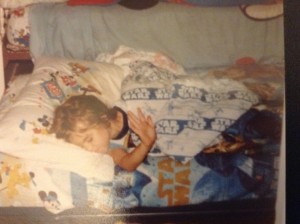





 What I wasn’t ready for was the way I burst out in tears during the trailer reel. It wasn’t even a really good movie preview that did it–it was a Public Service Announcement from Warner Brothers for a DC Comics child hunger initiative called “
What I wasn’t ready for was the way I burst out in tears during the trailer reel. It wasn’t even a really good movie preview that did it–it was a Public Service Announcement from Warner Brothers for a DC Comics child hunger initiative called “ I care about this because DC is family to me. I grew up in the glory days of Lynda Carter’s Wonder Woman and Christopher Reeve’s Superman and the technicolor weirdness of Sunday-afternoon episodes of Batman. I had the Underoos to prove it. I waited in line to have my picture taken with a distinctly sausage-like Batman at the local Toys’R’Us, and I was thrilled about it.
I care about this because DC is family to me. I grew up in the glory days of Lynda Carter’s Wonder Woman and Christopher Reeve’s Superman and the technicolor weirdness of Sunday-afternoon episodes of Batman. I had the Underoos to prove it. I waited in line to have my picture taken with a distinctly sausage-like Batman at the local Toys’R’Us, and I was thrilled about it. DH: This whole direction of being incapable of seeing what effect their portrayal of various characters is having isn’t new, obviously. You only have to look back to the past few years to see decisions like
DH: This whole direction of being incapable of seeing what effect their portrayal of various characters is having isn’t new, obviously. You only have to look back to the past few years to see decisions like 

 PB: Whereas Marvel actually sent out wedding “invitations” before their same-sex marriage in Astonishing X-Men #51 last year, and it sold hugely for them. Do you think DC execs just don’t have a good idea of who their readers are?
PB: Whereas Marvel actually sent out wedding “invitations” before their same-sex marriage in Astonishing X-Men #51 last year, and it sold hugely for them. Do you think DC execs just don’t have a good idea of who their readers are?

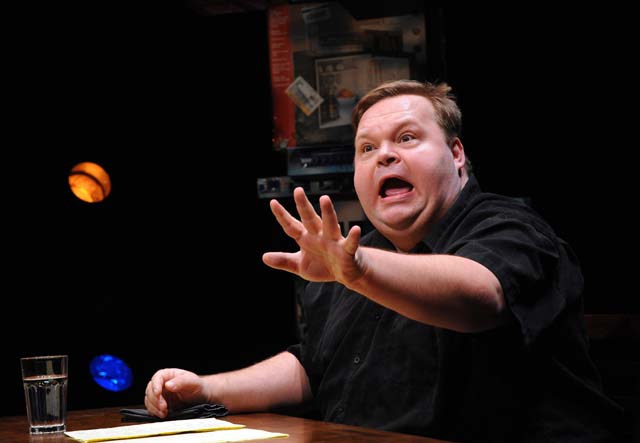 Or worse: you could end up like Mike Daisey. He’s a performer who got a lot of attention for a one-man show called
Or worse: you could end up like Mike Daisey. He’s a performer who got a lot of attention for a one-man show called 




 The
The 
 1.
1.  2.
2.  3.
3. 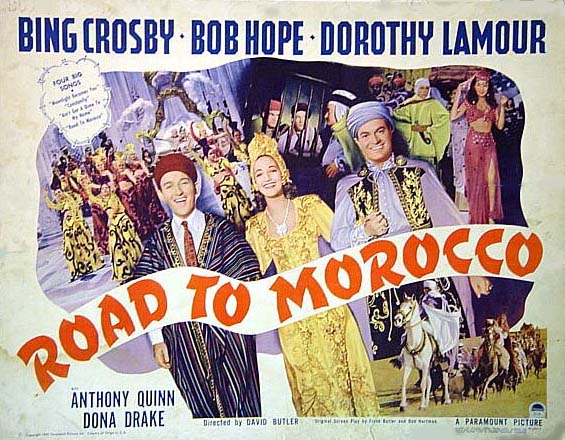 4.
4.  5.
5.  6.
6.  7.
7.  8.
8.  9.
9.  10.
10. 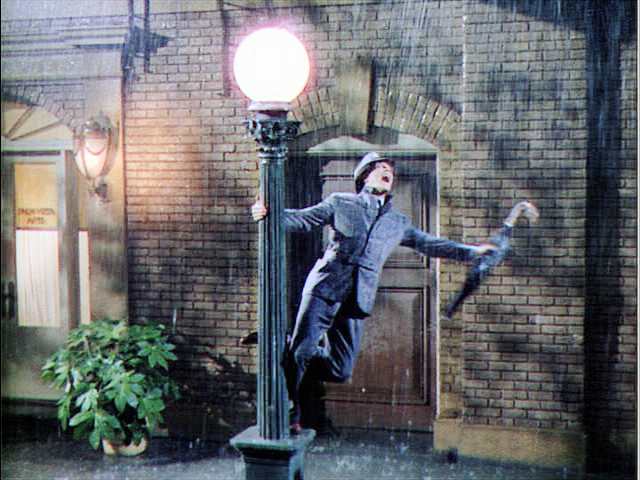 11.
11.  12.
12.